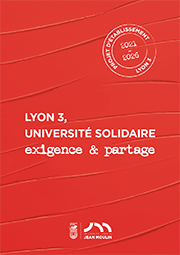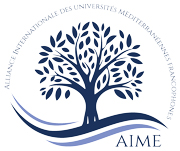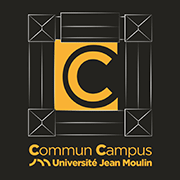AccueilRechercheProgrammes et productions scientifiquesThèsesThèses soutenuesThèses soutenues - 2006-2021Thèses soutenues - 2012
-
Partager cette page
- Recherche,
FENG Sha
L'Art ailleurs : La Recherche Anthropologique sur les Artistes Contemporains Chinois des Beaux-arts Vivants en France.
Publié le 12 juillet 2012 – Mis à jour le 28 ao?t 2012
Thèse en études transculturelles soutenue le 30 Juin 2012 en cotutelle avec l'Université Centrale des Nationalités à Pékin.
Depuis le début du 20e siècle, les artistes chinois ont commencé à poursuivre des rêves artistiques en France. Cent ans plus tard, bien que l’art fran?ais n’est plus le centre absolu du monde, son histoire glorieuse lui rend un symbole d’art avec un statut inébranlable. France ancienne avec son orientation de la politique culturelle a attiré des artistes du monde entier, ce qui sont devenues une importante patrimoine artistique et culturelle des Fran?ais; en même temps, ?culture fran?aise ?, comme un ensemble, cherche à continuer à construire un mythe de capital culturel.
Compte tenu de la structure du discours ?la Chine et l’Occident? depuis longtemps, les artistes chinois y est un peu spéciale. Pour les artistes chinois, la France est aussi ?le monde occidental? dans une large mesure. Ces artistes chinois, ils partagent une ambiance à l’étranger dans un contexte transculturel tout en connaissant leurs propres expériences et sentiments; ils font tout le temps innover leurs propres fa?ons de création héritées. Comme il était difficile de trouver un abstrait d’ensemble à partir des raisons spécifiques d’aller en France pour les artistes, en fait leur création ne se représente pas sous une forme de système et aspiration unifiés. Comme notre imagination sur la France, nous imaginons que les artistes chinois en France éprouvent un parcours ?inévitable? et le ?portrait de groupe sur leurs créatures?.
Cette thèse commence par l’exposition biennale de Lyon en 2009 avec mon expérience de participation en ce moment-là et ma progression de connaissance sur le fond culturel et historique local sociaux, en prenant progressivement la discussion de mon sujet de recherche. A partir de ce groupe particulier des ?artistes d’outre-mer? et selon à la fois du texte et la déclaration de l’artiste qui j’ai rencontre, d’abord je discute l’imagination et la réalité dans le fond ?étranger? en France, et puis analyse la structure narrative dans les textes de l’histoire d’art et des médias de masse pour les ?artistes étrangers?. Après cela, je interprète des ?uvres et des pratiques des artistes, parle leur compréhension de la structure narrative. Ensuite, je discute le marché de l’art et l’expérience des artistes dedans qui sont très importants par rapport au contexte actuel. Enfin, j’essaye de comparer l’expérience de l’artiste et les idées sociales et culturelles, et de faire la réflexion sur mes propres recherches et réflexions.
Since twentieth century, Chinese artists have been to France for their dream of art. Even though France is no longer the only art capital of the world today, the glorious history had made its status unshakable as a symbol, which attracted the artists who were eager to get opportunities for free creation and diverse inspiration. Their works became an important part of French culture and art, while the “French culture and art” as a whole keeps building the myth of cultural capital.
For the Chinese artists living in France, another myth is those famous artists in history. The history of famous Chinese artists in France is also no doubt a mirror of the transformation process, in which the significations of symbols in “Chinese-occidental” structure were changed.
Living aboard can be a chance when the artists construct a present beyond the established time-space for identity politics. In the same time, artists reconstruct the myths in their time-space by way of being the others or inspired by the others. Thus, not only the typical identified Chinese impression which the art history prefers, but the diverse creative works appear. Face to world full of spectacles, the transcultural experiences is not necessarily represented as a consistent symbolic difference between east and west, but more as the artists’ expressions to the specific circumstances in the trans-cultural vision.
The value of art is established in such a world full of unstable significances under the interaction of many different factors in the field of art, which include both cultural and market system. The artists have to make a balance between independence and market needs. In this case, artistic behavior is not just individual but rather the behavior of social relations.
This also means that the artists shuttle in not only their cultural experience, but also the habits of picture interpretations. If we consider art as a compression model for grasping the world as a totality, then the cultural habits and the field of art are all in this world. Maybe it is possible to use the concept of intertextuality to deal with this kind of mixture, in which acculturation and enculturation make a fusion. Intertextuality doesn’t mean an absolute equality as expected, rather refers to the importance of cultural practice, which involves the discussion of contexts and a series of negotiation for power and meaning.
Mots-clef : acculturation; artiste chinois en France; champ d’art; contexte compelex; enculturation; habitude culturelle; intertextualité; modèle réduit; totalité
Key words : acculturation; Chinese artists living in France; compression model; context; cultural habits; enculturation; intertextuality; field of art; totality
Directeur de thèse : Gregory B. LEE
Jian-Min WANG
Membres du jury :
Gregory B. LEE, Professeur, Université Jean Moulin Lyon 3
Jian-Min WANG, Professeur, Université centrale des nationalités, Pékin
Haiyang ZHANG, Professeur, Université centrale des nationaliltés, Pékin
Yanbo GUAN, Chercheur supérieur national, académie sciences sociales de Chine
Florent VILLARD, Ma?tre de conférences, Université Jean Moulin Lyon 3
Xiaoyang ZHU, Professeur, Université de Pékin
Président du jury : ZHANG Haiyang
Mention : Très honorable
Equipe d'accueil : IETT
Compte tenu de la structure du discours ?la Chine et l’Occident? depuis longtemps, les artistes chinois y est un peu spéciale. Pour les artistes chinois, la France est aussi ?le monde occidental? dans une large mesure. Ces artistes chinois, ils partagent une ambiance à l’étranger dans un contexte transculturel tout en connaissant leurs propres expériences et sentiments; ils font tout le temps innover leurs propres fa?ons de création héritées. Comme il était difficile de trouver un abstrait d’ensemble à partir des raisons spécifiques d’aller en France pour les artistes, en fait leur création ne se représente pas sous une forme de système et aspiration unifiés. Comme notre imagination sur la France, nous imaginons que les artistes chinois en France éprouvent un parcours ?inévitable? et le ?portrait de groupe sur leurs créatures?.
Cette thèse commence par l’exposition biennale de Lyon en 2009 avec mon expérience de participation en ce moment-là et ma progression de connaissance sur le fond culturel et historique local sociaux, en prenant progressivement la discussion de mon sujet de recherche. A partir de ce groupe particulier des ?artistes d’outre-mer? et selon à la fois du texte et la déclaration de l’artiste qui j’ai rencontre, d’abord je discute l’imagination et la réalité dans le fond ?étranger? en France, et puis analyse la structure narrative dans les textes de l’histoire d’art et des médias de masse pour les ?artistes étrangers?. Après cela, je interprète des ?uvres et des pratiques des artistes, parle leur compréhension de la structure narrative. Ensuite, je discute le marché de l’art et l’expérience des artistes dedans qui sont très importants par rapport au contexte actuel. Enfin, j’essaye de comparer l’expérience de l’artiste et les idées sociales et culturelles, et de faire la réflexion sur mes propres recherches et réflexions.
Since twentieth century, Chinese artists have been to France for their dream of art. Even though France is no longer the only art capital of the world today, the glorious history had made its status unshakable as a symbol, which attracted the artists who were eager to get opportunities for free creation and diverse inspiration. Their works became an important part of French culture and art, while the “French culture and art” as a whole keeps building the myth of cultural capital.
For the Chinese artists living in France, another myth is those famous artists in history. The history of famous Chinese artists in France is also no doubt a mirror of the transformation process, in which the significations of symbols in “Chinese-occidental” structure were changed.
Living aboard can be a chance when the artists construct a present beyond the established time-space for identity politics. In the same time, artists reconstruct the myths in their time-space by way of being the others or inspired by the others. Thus, not only the typical identified Chinese impression which the art history prefers, but the diverse creative works appear. Face to world full of spectacles, the transcultural experiences is not necessarily represented as a consistent symbolic difference between east and west, but more as the artists’ expressions to the specific circumstances in the trans-cultural vision.
The value of art is established in such a world full of unstable significances under the interaction of many different factors in the field of art, which include both cultural and market system. The artists have to make a balance between independence and market needs. In this case, artistic behavior is not just individual but rather the behavior of social relations.
This also means that the artists shuttle in not only their cultural experience, but also the habits of picture interpretations. If we consider art as a compression model for grasping the world as a totality, then the cultural habits and the field of art are all in this world. Maybe it is possible to use the concept of intertextuality to deal with this kind of mixture, in which acculturation and enculturation make a fusion. Intertextuality doesn’t mean an absolute equality as expected, rather refers to the importance of cultural practice, which involves the discussion of contexts and a series of negotiation for power and meaning.
Mots-clef : acculturation; artiste chinois en France; champ d’art; contexte compelex; enculturation; habitude culturelle; intertextualité; modèle réduit; totalité
Key words : acculturation; Chinese artists living in France; compression model; context; cultural habits; enculturation; intertextuality; field of art; totality
Directeur de thèse : Gregory B. LEE
Jian-Min WANG
Membres du jury :
Gregory B. LEE, Professeur, Université Jean Moulin Lyon 3
Jian-Min WANG, Professeur, Université centrale des nationalités, Pékin
Haiyang ZHANG, Professeur, Université centrale des nationaliltés, Pékin
Yanbo GUAN, Chercheur supérieur national, académie sciences sociales de Chine
Florent VILLARD, Ma?tre de conférences, Université Jean Moulin Lyon 3
Xiaoyang ZHU, Professeur, Université de Pékin
Président du jury : ZHANG Haiyang
Mention : Très honorable
Equipe d'accueil : IETT
Documentation
Mise à jour : 28 ao?t 2012







